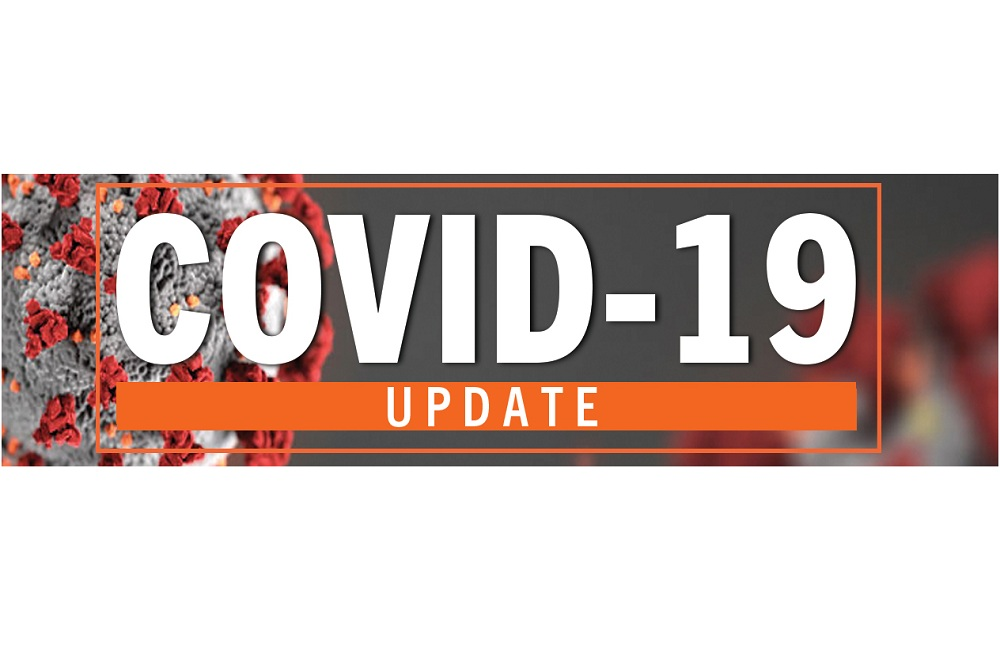Alabama Department of Public Health, Bureau of Health issued the following announcement on March 4
Since mid-January, the Alabama Department of Public Health (ADPH) has worked with local, state, and federal partners to learn, prepare, and provide the most up-to-date information to the public about the novel coronavirus COVID-19. Our department has been in almost constant daily contact with the Centers for Disease Control and Prevention (CDC) and is coordinating our response efforts with multiple agencies. With the growing public concern about this coronavirus, our knowledge continues to increase. While no cases have been identified in Alabama at this time, we continue to monitor and prepare.
COVID-19 is a respiratory illness that has symptoms similar to influenza--fever, coughing, shortness of breath. In most cases, people do not need to be hospitalized, but people with chronic conditions, older people, and those with compromised immune systems are at greater risk. Flu shots are recommended for those who have not had one this season. If an outbreak occurs, having had a flu shot will allow for earlier identification and limit confusion as to whether the individual has COVID-19 or the flu.
Alabama has a considerable amount of experience dealing with infectious diseases. These include Ebola, Zika, and H1N1 influenza. For a number of years, ADPH has worked closely with healthcare providers and hospitals on ways to evaluate patients and to provide the best advice and guidance. Our hospitals have planned strategies and regularly practice their emergency preparedness plans to deal with disease threats. We have also communicated with schools, businesses, and institutions of higher learning, and are confident that Alabama has developed a strong plan.
As a clearer picture is emerging, ADPH advises the general public that the best way to avoid infection is to wash your hands frequently, avoid touching your face, cover coughs and sneezes, stay home when you are ill, and practice social distancing strategies such as staying 6 feet apart from other individuals. People taking medications, especially seniors, should make sure they have adequate supplies of blood pressure and other prescriptions.
Everyone has a role to play in keeping our state safe and healthy. Misinformation about any health issue can be dangerous, so please seek reputable sources of information about COVID-19 such as is found on this website. The ADPH Infectious Diseases & Outbreaks (ID&O) Division can answer general questions at 334-206-5347 during regular business hours or you may visit our Coronavirus Disease (COVID-19) pages.
Scott Harris, M.D.
State Health Officer
back to top
March - 20 Food, Nutrition, and Health Tips for 2020
National Nutrition Month, celebrated each year during the month of March, focuses on the importance of making informed food choices and developing sound eating and physical activity habits. The National Nutrition Month ® 2020 theme is “Eat Right, Bite by Bite.”
The Academy of Nutrition and Dietetics has provided the following 20 health tips for 2020. Please review them. Even small changes in eating a variety of nutritious foods can lead to better health.
1. Eat Breakfast
Start your morning with a healthy breakfast that includes lean protein, whole grains, fruits, and vegetables. Try making a breakfast burrito with scrambled eggs, low-fat cheese, salsa, and a whole wheat tortilla or a parfait with low-fat plain yogurt, fruit, and whole grain cereal.
2. Make Half Your Plate Fruits and Vegetables
Fruits and veggies add color, flavor, and texture plus vitamins, minerals, and dietary fiber to your plate. Make 2 cups of fruit and 2 ½ cups of vegetables your daily goal. Experiment with different types, including fresh, frozen, and canned.
3. Watch Portion Sizes
Get out the measuring cups and see how close your portions are to the recommended serving size. Use half your plate for fruits and vegetables and the other half for grains and lean protein foods. To complete the meal, add a serving of fat-free or low-fat milk or yogurt.
4. Be Active
Regular physical activity has many health benefits. Start by doing what exercise you can. Children and teens should get 60 or more minutes of physical activity per day, and adults at least two hours and 30 minutes per week. You don't have to hit the gym—take a walk after dinner or play a game of catch or basketball.
5. Get to Know Food Labels
Reading the Nutrition Facts panel can help you shop and eat or drink smarter.
6. Fix Healthy Snacks
Healthy snacks can sustain your energy levels between meals, especially when they include a combination of foods. Choose from two or more of the MyPlate food groups: grains, fruits, vegetables, dairy, and protein. Try raw veggies with low-fat cottage cheese, or a tablespoon of peanut butter with an apple or banana.
7. Consult an RDN
Whether you want to lose weight, lower your health-risks, or manage a chronic disease, consult the experts! Registered dietitian nutritionists can help you by providing sound, easy-to-follow personalized nutrition advice.
8. Follow Food Safety Guidelines
Reduce your chances of getting sick with proper food safety. This includes: regular hand washing, separating raw foods from ready-to-eat foods, cooking foods to the appropriate internal temperature, and refrigerating food promptly. Learn more about home food safety at www.homefoodsafety.org.
9. Drink More Water
Quench your thirst with water instead of drinks with added sugars. Stay hydrated and drink plenty of water, especially if you are active, an older adult, or live or work in hot conditions.
10. Get Cooking
Preparing foods at home can be healthy, rewarding, and cost-effective. Master some kitchen basics, like dicing onions or cooking dried beans.
11. Dine Out without Ditching Goals
You can eat out and stick to your healthy eating plan! The key is to plan ahead, ask questions, and choose foods carefully. Compare nutrition information, if available, and look for healthier options that are grilled, baked, broiled, or steamed.
12. Enact Family Meal Time
Plan to eat as a family at least a few times each week. Set a regular mealtime. Turn off the TV, phones, and other electronic devices to encourage mealtime talk. Get kids involved in meal planning and cooking and use this time to teach them about good nutrition.
13. Banish Brown Bag Boredom
Whether it’s for work or school, prevent brown bag boredom with easy-to-make, healthy lunch ideas. Try a whole-wheat pita pocket with veggies and hummus or a low sodium vegetable soup with whole grain crackers or a salad of mixed greens with lowfat dressing and a hard-boiled egg.
14. Reduce Added Sugars
Foods and drinks with added sugars can contribute empty calories and little or no nutrition. Review the new and improved Nutrition Facts labels or ingredients list to identify sources of added sugars.
15. Eat Seafood Twice a Week
Seafood—fish and shellfish—contains a range of nutrients including healthy omega-3 fats. Salmon, trout, oysters, and sardines are higher in omega-3s and lower in mercury.
16. Explore New Foods and Flavors
Add more nutrition and eating pleasure by expanding your range of food choices. When shopping, make a point of selecting a fruit, vegetable, or whole grain that’s new to you or your family.
17. Experiment with Plant-Based Meals
Expand variety in your menus with budget friendly meatless meals. Many recipes that use meat and poultry can be made without them. Eating a variety of plant foods can help. Vegetables, beans, and lentils are all great substitutes. Try including one meatless meal per week to start. Eating a variety of plant foods can help. Vegetables, beans, and lentils are all great substitutes. Try including one meatless meal per week to start.
18. Make an Effort to Reduce Food Waste
Check out what foods you have on hand before stocking up at the grocery store. Plan meals based on leftovers and only buy what you will use or freeze within a couple of days. Managing these food resources at home can help save nutrients and money.
19. Slow Down at Mealtime
Instead of eating on the run, try sitting down and focusing on the food you're about to eat. Dedicating time to enjoy the taste and textures of foods can have a positive effect on your food intake.
20. Supplement with Caution
Choose foods first for your nutrition needs. A dietary supplement may be necessary when nutrient requirements can't be met or there is a confirmed deficiency. If you're considering a vitamin, mineral, or herbal supplement, be sure to discuss safe and appropriate options with an RDN or another healthcare provider before taking it.
Scott Harris, M.D.
State Health Officer
(March 2019)
Original source can be found here.


 Alerts Sign-up
Alerts Sign-up